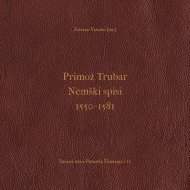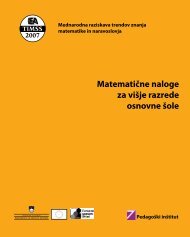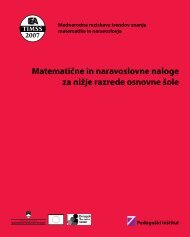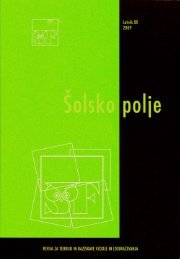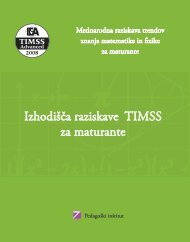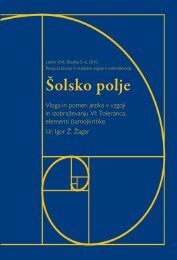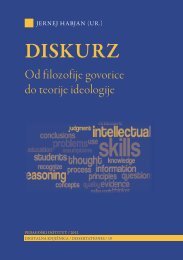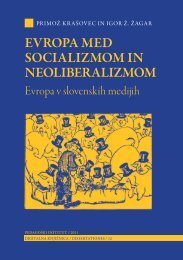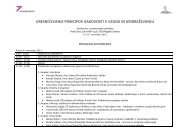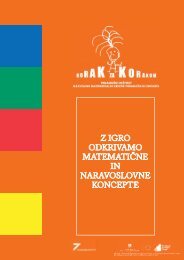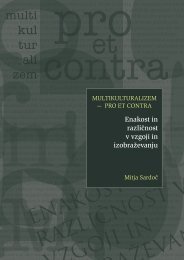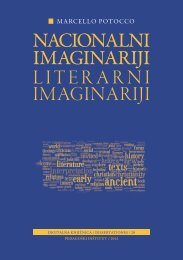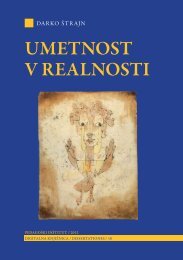Šolsko polje, letnik XX, številka 5-6, 2009: Vloga ... - Pedagoški inštitut
Šolsko polje, letnik XX, številka 5-6, 2009: Vloga ... - Pedagoški inštitut
Šolsko polje, letnik XX, številka 5-6, 2009: Vloga ... - Pedagoški inštitut
You also want an ePaper? Increase the reach of your titles
YUMPU automatically turns print PDFs into web optimized ePapers that Google loves.
62 ŠOLSKO POLJE LETNIK <strong>XX</strong> ŠTEVILKA 5/6These examples may sound kind of square and flat nowadays. But hereare a few Aristotelian topoi that could well be used in critical discourseanalysis (instead of just checking the possible arguments »against thebackground of the list of topoi«). They are not »common truths«, or »generallyaccepted probabilities«, but a kind of precepts for finding and testingthese »common truths« or »generally accepted probabilities«:»For philosophic purposes we must deal with propositions from thepoint of view of truth, but for purposes of dialectic, with a view to opinion.Propositions must always be taken in their most universal form.«(T. I. xiv. 30-31)»One commonplace is to look whether your opponent has assigned asan accident something which belongs in some other way.« (T. II. ii. 34-36)»Another commonplace is to make definitions both of the accidentand of that to which it belongs, either of both separately or one of them,and then see if anything untrue has been assumed as true in the definitions.For example, to see if it is possible to wrong a god, you must ask,what does ‘wrong’ mean?« (T. II. ii. 30-34)»Furthermore, if a term is used with more than one meaning and ithas been stated that it belongs to or does not belong to something, weought to demonstrate one of the several meanings if it is impossible todemonstrate both.« (T. II iii 23-26)It should be pretty clear by now, I think, that we can distinguish twoways in which Aristotle frames topoi in his Topics. Even more, topoi in theTopics would (usually) be twofold, they would consist of an instruction,and on the basis of this instruction a rule would be formulated:1) Instructions (precepts): »Check whether C is D.«2) Rules (laws): »If C is D, then B will be A.«Instructions would (usually) check the relations between the four predicables(definition, genus, property, accident), and upon this check up, akind of a rule would be formulated that could - applied to a certain subject-matter- serve as a general premise of an enthymeme.Topoi therefore serve as heuristic devices, and can be of three types:1) Some topoi instruct one to examine, for instance, whether »the contraryof A holds of the contrary of B«, if B is A is to be proved.2) Other topoi consist merely of such an introductory label and an exampleof the type of argument in question. Here the introductory label



